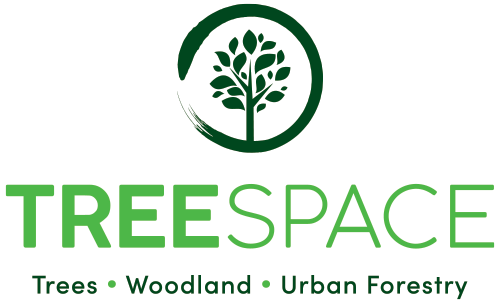Captivating Week of Woodlands
October 2024 began with a captivating tour of Woodlands on the island of Ireland. The three-day Woodlands of Ireland Conference held at Castle Saunderson in Co. Cavan was the first stop of the tour. The three key themes of the conference were ‘Ancient woodland on the island of Ireland’, ‘Protective tree cover in catchments’, and ‘Community involvement in forest management’. The morning session of day 1 of the conference was held at Crom Estate in Co. Fermanagh. Crom is an approximately 809-hectare estate located in the surroundings of Upper Lough Erne. The area has an unusual topography of rolling hills, islands and lakes. Crom Estate includes islands, historic parkland, and ancient woodlands. Participants at the conference were introduced to an area of historic parkland, an ancient woodland on the island of Inisherk, and the famous Crom Yew trees. The morphology of the Crom Yew trees was fascinating, their age has been the subject of much debate, but it is suggested that the older female tree is in the region of 800 years old.
The evening session of day 1 of the conference was held at Castle Saunderson. Participants were introduced to a series of presentations about different woodland projects on the island of Ireland. Four members of the Ancient Woodlands Ireland Project presented on their specialised discipline, and how their field of research will contribute to unlocking the project aims. The multidisciplinary research team will use machine learning, historic maps and manuscripts, paleoecology, and microbiology to deliver an all-island inventory of ancient woodlands in Ireland. Government departments including NPWS, DAFM, and NIEA presented on the EU Nature Restoration Law, grant schemes for native woodland conservation, and the current condition of native woodlands in Northern Ireland respectively.
Day 2 of the conference was a full day of presentations at Castle Saunderson. The theme of the morning session was ‘Protective tree cover in catchments’. Local authority agencies, government departments, and representatives from the agroforestry sector presented on the potential roles of native tree cover for improving water quality and providing buffering to adjacent intensive land uses. The presentations were followed by an absorbing panel discussion with the conference delegates.
The theme of the evening session was ‘Community involvement in forest management’. Representatives from charities and community groups who are actively promoting, managing and establishing native woodlands in Ireland presented on their various projects. The presentation on ‘Save Rathcoole Woodlands’ was of particular interest. The woodland is effectively an urban forest at the edge of Rathcoole which has developed naturally over the past 30 years. Ecological surveys undertaken in the woodland have identified three priority Annex 1 habitats, the most extensive Annex 1 habitat relates to 91EO Alluvial forests with Alnus glutinosa and Fraxinus excelsior which is one of the rarest woodland habitats remaining in Ireland. The final presentation of the day gave an insight into community forestry in the mountainous country of Nepal and how forest cover was almost doubled in a short 25-year period. During the late twentieth century forests in Nepal’s hillsides were being degraded by over grazing and fuelwood harvesting resulting in increased flooding and landslides. Changes in forest policy in the early 1990’s stimulated a community led approach to forest management which resulted in a near doubling of forest cover.
The final stop of the week was at the Pro Silva Autumn Field Day at Rosturra Millennium Forest. The theme of the field day was ‘Managing forests for biodiversity’. Rosturra forest is a Coillte owned property managed primarily for nature as a ‘Coillte biodiversity area’. The area has a long history of forest cover with areas of young native forest, old sessile oak woodland, young oak plantations, and conifer forests. Coillte currently manages 20% of its forest estate primarily for biodiversity and has set ambitious targets to increase that area to 30% by the end of 2025. One of the key practices that Coillte uses to manage forests for biodiversity is Continuous Cover Forestry (CCF) or Closer-to-nature forest management. To deliver CCF a variety of silvicultural systems can be utilised to maintain a continuous forest canopy and natural regeneration is encouraged to replace harvested trees. Both selection and shelterwood systems can be used to implement CCF. The CCF approach to woodland management has a strong association with increased forest resilience, improved ecosystem services, high quality timber production, and high biodiversity and nature value. The practice of CCF is being promoted in Ireland by Pro Silva Ireland through a series of workshops, training days, field trips and study tours.












